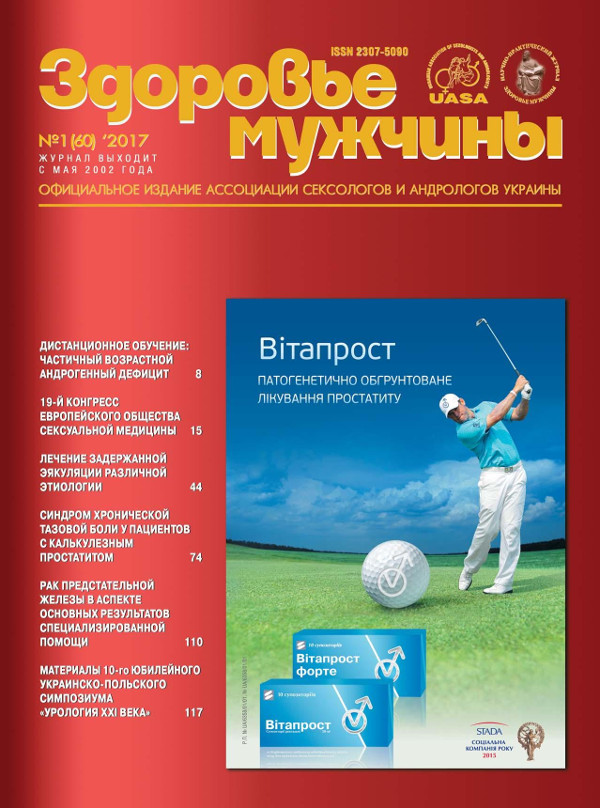Typology of urination disorders in patients with idiopathic overactive bladder
##plugins.themes.bootstrap3.article.main##
Abstract
##plugins.themes.bootstrap3.article.details##

This work is licensed under a Creative Commons Attribution 4.0 International License.
Authors retain the copyright and grant the journal the first publication of original scientific articles under the Creative Commons Attribution 4.0 International License, which allows others to distribute work with acknowledgment of authorship and first publication in this journal.
References
Diagnosis and treatment of overactive bladder (non-neurogenic) in adults: AUA/SUFU Guideline / E.A. Gormley, D.J. Lightner, K.L. Burgio [et al.] // 2012 May. American Urological Association.
Tikkinen K.A. Does the Imprecise Definition of Overactive Bladder Serve Commercial Rather than Patient Interests? / K.A. Tikkinen, A. Auvinen // Eur Urol. – 2012 Apr;61(4):746–8; discussion 749– 50. Epub 2012 Jan 5.
Nocturia and quality of life: results from the Boston area community health survey / V. Kupelian, J.T. Wei, M.P. O’Leary [et al.] // Eur. Urol. – 2012; Jan; 61(1):78–84.
The Prevalence of Clinically Meaningful Overactive Bladder: Bother and Quality of Life Results from the Population-Based FINNO Study / C.P. Vaughan, T.M. Johnson, M.A. Ala-Lipasti [et al.] // Eur. Urol. – 2011; Jan 25.
Дехтяр Ю.М., Костєв Ф.І., Будіянська В.В. Диференційована фармакотерапія дизурічних симптомів в залежності від клінічних особливостей перебігу гіперактивного сечового міхура // Урологія. – 2016. – Т. 20. No 2. – С. 8–14.
EAU guidelines on urinary incontinence / J.A. Thьroff, P. Abrams, K.E. Andersson [et al.] // Eur. Urol. – 2011 Mar; 59(3):387–400.
Diagnosis and treatment of overactive bladder (non-neurogenic) in adults: AUA/SUFU guideline / E.A. Gormley, D.J. Lightner, K.L. Burgio [et al.]. – 2014.





